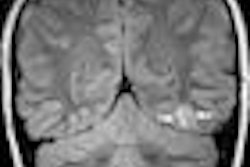Breast MRI has demonstrated its value in routine preoperative evaluation of women diagnosed with breast cancer. But recent studies have indicated there could be potential downsides to the modality, such as an increase in mastectomy rates and time delays between diagnosis and treatment.
But a new study published in the September issue of the American Journal of Surgery contradicts both those findings, indicating that, when properly used, breast MRI can actually lead to a rise in breast conservation rather than mastectomy among patients scheduled for surgery, while at the same time producing no delay in treatment.
In the study, a team led by Dr. Alan Hollingsworth of Mercy Women's Center in Oklahoma City performed breast MRI on all women newly diagnosed with breast cancer from March 2003 through December 2006. The purpose of the study was to assess the impact of breast MRI in the overall population of preoperative patients.
Study findings
From a total of 4,569 patients who underwent breast MRI during the study period, 603 patients were included in the study group, in which direct histologic correlations to the MRI findings were made. The first 249 patients were scanned with a 0.5-tesla dedicated breast MRI scanner (Aurora Imaging Technology, North Andover, MA), while the next 354 patients were scanned with a 1.5-tesla dedicated breast MRI unit (Aurora).
The initial series of 334 sequential patients showed that MRI-discovered multicentric disease occurred in 7.7%, and contralateral cancers were discovered in 3.7%. Of the contralateral cancers discovered by MRI, the study determined that 50% of the unsuspected disease was the same or worse than the ipsilateral cancer. Occult disease discovered by MRI, when coupled with findings at the primary tumor site, impacted surgical therapy in 20% of patients overall.
The study also produced a low re-excision rate after lumpectomy of 8.8%, well below the accepted reoperation rates that have been reported. The low percentage continues to hold beyond the December 2006 close of the data, Hollingsworth said.
The center's 2007 data showed a 9% re-excision rate, well below the national average of about 25%. Hollingsworth attributes the low number to the surgeons' ability to have a preoperative map of how much tissue they need to remove. As a result, surgeons are achieving clear margins the first time in. This results in fewer follow-up surgeries and, as a result, cost savings.
Histologic types included 388 invasive ductal carcinomas (and subtypes), 149 patients with ductal carcinoma in situ (DCIS), 65 with invasive lobular carcinoma, and one patient with a malignant phyllodes tumor. Diagnosis was made by image-guided biopsy in 547 patients. The remaining 56 patients underwent surgical biopsy.
Important accuracy
Breast MRI showed more tumor at the site of the index lesion than conventional imaging. The ability to determine accurate tumor size often enabled surgeons to plan for a larger segmental resection. Despite the larger tumor size, either unifocal or multifocal, 40% of these patients still underwent breast conservation.
Although 43 patients were known to have multicentric disease (a separate focus of cancer more than 5.0 cm away from the index lesion or tumors, or tumors that extended to another quadrant) before the preoperative MRI, an additional 43 patients were identified as having multicentric disease on the MRI alone. This represented 7.7% (43 of 560) of the patients considered to have a solitary lesion determined by conventional imaging.
Of those cases, 25 women had invasion (17 ductal and eight lobular, with five of eight having 3- and 4-quadrant disease). Eighteen patients had DCIS, of which nine were multiquadrant high-grade lesions.
The time element
A study presented in September at the American Society of Clinical Oncology (ASCO) Breast Cancer Symposium found that breast MRI can delay treatment, with time from onset of symptoms to evaluation at 107.5 days without MRI to 129.9 days with it. But Hollingsworth's research contradicts these findings.
He attributes this to the way breast MRI is conducted at Mercy Women's Center, which schedules breast MRI within 24-48 hours and an immediate workup for any abnormality.
"I think where you [see the time lengthened] is women who are contemplating plastic surgery, immediate reconstruction," Hollingsworth said. "They can go extended lengths of time between when their diagnosis is made by the time their surgery is scheduled. You have plastic surgeons doing delay procedures for flaps, [prolonging] the interval three to four weeks sometimes."
Using whole-body scanners adapted for breast MRI in the hospital environment can indeed delay treatment for up to two weeks, but Hollingsworth says given the biology of breast cancer, that kind of delay makes no difference in the outcomes.
MRI and mastectomy rates
Regarding breast MRI and mastectomy rates, Hollingsworth's team reported a lower mastectomy rate than research presented in May at the ASCO meeting. In that study, researchers from the Mayo Clinic in Rochester, MN, found that 52% of patients who received breast MRIs opted for mastectomy, compared with 38% of patients who did not have MRIs. One of the theories behind that finding was that breast MRI "pushes people toward mastectomy because [it finds] additional tumors," Hollingsworth said.
But Hollingsworth and colleagues found that only 40% of their patients received mastectomies following breast MRI. This figure includes patients who could have received unilateral lumpectomy for treatment of the index lesion, but opted for bilateral mastectomy as a preventive strategy against future cancer. When these patients were excluded, only 35% of breast MRI recipients received mastectomies, Hollingsworth said.
Hollingsworth believes that the study indicates that breast MRI can lead to higher rates of breast conservation treatment in some cases. Women leaning toward mastectomy change their opinion when they see their MRI study and it indicates a well-defined tumor. "That's a single ball of tumor cells [with] all that normal breast tissue surrounding it," Hollingsworth said. "They realize how much lumpectomy makes sense."
Women are opting not only for breast conservation, but for breast conservation with partial breast radiation. "I think this is the larger force that is completely neutralizing the women that are directed toward mastectomy," Hollingsworth said.
By Lin Muschlitz
AuntMinnie.com staff writer
October 9, 2008
Related Reading
Routine MRI at breast cancer diagnosis linked to treatment delays, September 9, 2008
Breast MRI develops role as surgical planning tool, September 2, 2008
The comprehensive breast center: Greater than the sum of its parts, September 2, 2008
Preoperative MRI helps detect additional breast cancer, but may delay treatment, July 25, 2008
New scans prompt mastectomies for breast patients, May 16, 2008
Copyright © 2008 AuntMinnie.com



.fFmgij6Hin.png?auto=compress%2Cformat&fit=crop&h=100&q=70&w=100)




.fFmgij6Hin.png?auto=compress%2Cformat&fit=crop&h=167&q=70&w=250)











